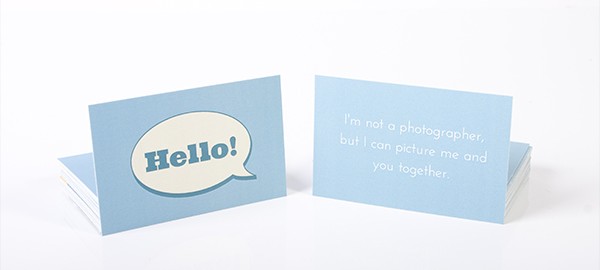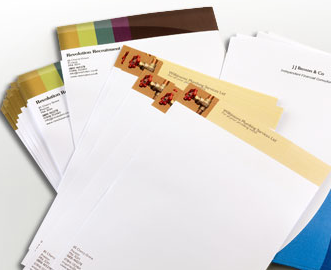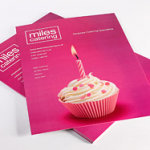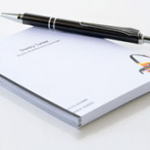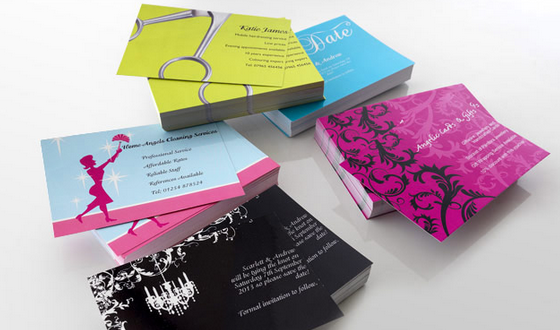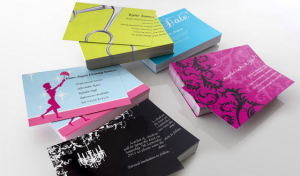If you’re reading this, it’s probably because you’re considering rebranding your business in 2022. And that’s a great idea! A rebrand can help refresh your image, attract new customers and boost profits.
Maybe you’re bored with the look of your marketing materials and business stationery, or you feel you aren’t connecting with your target market like you used to. Perhaps there’s a new company in the industry that is giving you a run for your money, and you feel that rebranding will help you compete.
But a rebrand is a huge undertaking that involves a lot of time, money and effort. How do you know when it’s the right time, or even the right decision? In this guide, we’ll discuss 9 clear signs that indicate it’s time for a rebrand, and share some helpful tips.
1) You’re Not Happy with Your Identity
One of the most obvious signs that it’s time for a rebrand is if you’re not happy with your current brand identity. As a business owner, it’s often good to follow your gut feelings, and this is an excellent example! If you’re not happy with your branding, it’s likely that your customers won’t be either.
A rebrand can help you create a new identity that accurately represents your business and its values. So if you’re feeling uninspired by your current logo, colour scheme, product packaging or tagline, it might be time for a change.
Tip: If you’re not sure where to start, try conducting a brand audit. This will help you take a closer look at your current branding and assess what’s working well and what needs to be improved.
2) Your Logo Is Outdated
Another sign that it’s time for a rebrand is if your logo feels outdated.
This might be the result of changing trends or evolving technologies, or just a matter of trends changing. But whatever the reason, an outdated logo can make your business look dated too.
A rebrand can help you create a fresh, modern logo that accurately represents your business in the present day. So if you’re looking to update your image, this is definitely the way to do it!
Tip: When redesigning your logo, try to focus on simplicity and versatility. A complex logo might look great on your website, but it might not work so well on a business card or letterhead.
3) Your Branding Is Inconsistent
If your branding is inconsistent, it’s likely that customers are getting confused about who you are, what you do and what you stand for. This can be a major problem, especially if you’re operating in a competitive market.
A rebrand can help to unify your branding and make it more consistent across all mediums. By creating a strong visual identity, you can make sure that customers always know who you are, no matter where they see your branding.
Tip: When rebranding, it’s important to create a brand guidelines document. This will help to ensure that your new branding is consistently applied across all touchpoints, from your website to your business cards.
4) You Don’t Stand Out
A business whose branding doesn’t help them stand out from the crowd is never going to succeed and thrive the way you’d like it to.
Perhaps when you first started your company, you didn’t have a lot of experience and weren’t sure how to design a memorable name, logo and tagline that would stick in your customers’ minds. Or maybe when you first started out, you were operating in an untapped market, and now you have a lot of competition.
Whatever the reason, a complete rebrand – especially with the help of hired professionals – will make your business feel fresh and new, and will help set you apart from your competitors.
5) The Industry is Moving On
If you’re part of a particularly new or fast-paced industry, your business has to be constantly evolving to keep up with these changes. If it isn’t, you’ll quickly find yourself left behind.
This might manifest itself in a number of ways, such as:
1) Outdated website design
2) Irrelevant marketing materials
3) Products that are no longer in demand
All of this feeds back into your branding, because you want your branding to represent precisely what it is that customers/clients can expect from you.
A rebrand can help to signal that your business is keeping up with the times, and is willing to adapt to changes in order to stay ahead. It can also help you attract new customers who are looking for something fresh and innovative.
6) Your Target Market Has Changed
If your target market has changed, it’s likely that your current branding is no longer relevant.
Maybe you’ve pivoted towards eco-friendly products; well, changing your logo and marketing materials to incorporate the colour green is an obvious potential change. Or, you might have started selling to businesses instead of consumers; in this case, a more corporate branding style would be more appropriate.
A rebrand can help you reach your new target market by creating branding that appeals to them. So if you’ve changed your business focus, it’s time to update your branding too!
7) Your Business is Evolving
If your business is in the process of growing or expanding into new areas, or your vision or ethos is changing from what it used to be, this may also be a good time for a rebrand.
This might be because of changing demographics, evolving technologies or even an adjustment in your personal beliefs. It might just be that you think your business needs to move in a different direction, in order to take advantage of changing public opinion or interests.
A rebrand that reflects your new business model and ethos can help you future-proof your business and ensure that you’re ready for these changes.
8) You’re Not Reaching Your Audience
Sluggish sales figures? Hardly any visits to your websites? Or do you never hear the bell ring to tell you a customer just walked in? If any of this sounds familiar, it might be because you’re not reaching your audience.
One of the main purposes of branding is to create a connection between your business and your target market. But if that connection isn’t there, then you’re missing out on a lot of potential customers.
Rebranding can help in two ways. One is if there are any negative connotations people have with your business; maybe you recently bought it, and it still has a bad reputation in the trade, for example. The other way rebranding can help is by giving the impression of freshness and newness, which can draw in customers that would otherwise ignore you.
9) You Can’t Keep Up with Competitors
The competition is always changing, and if you’re not keeping up, you’ll quickly fall behind.
One of the best ways to stay ahead of the curve is by constantly re-evaluating your branding. If you see that your competitors have updated their branding in a way that’s more in line with what customers are looking for, then it might be time to do the same.
Of course, this is a fine balancing act. After all, you’re constantly working to build brand recognition and make a name for your business in the industry. Rebranding after all that effort may not be the right idea. But nobody said running a business was easy!
Contact 123Print Today!
If you’re considering rebranding your business, it’s important to update your physical marketing materials – such as business cards, flyers and letterheads. So, once you’ve settled on a new direction to go in, get in touch with 123Print.
123Print provides high-quality printing that is both affordable and totally customisable, so that you can rebrand without the effort and at a fraction of the cost. You’ll find thousands of templates on our site to suit a wide variety of industries and niches – every one of them ready to be customised and made to specification.
We offer professional printing, speedy shipping and a 100% money back guarantee – so you can rely on 123Print to kick-start your 2022 rebranding adventure!
